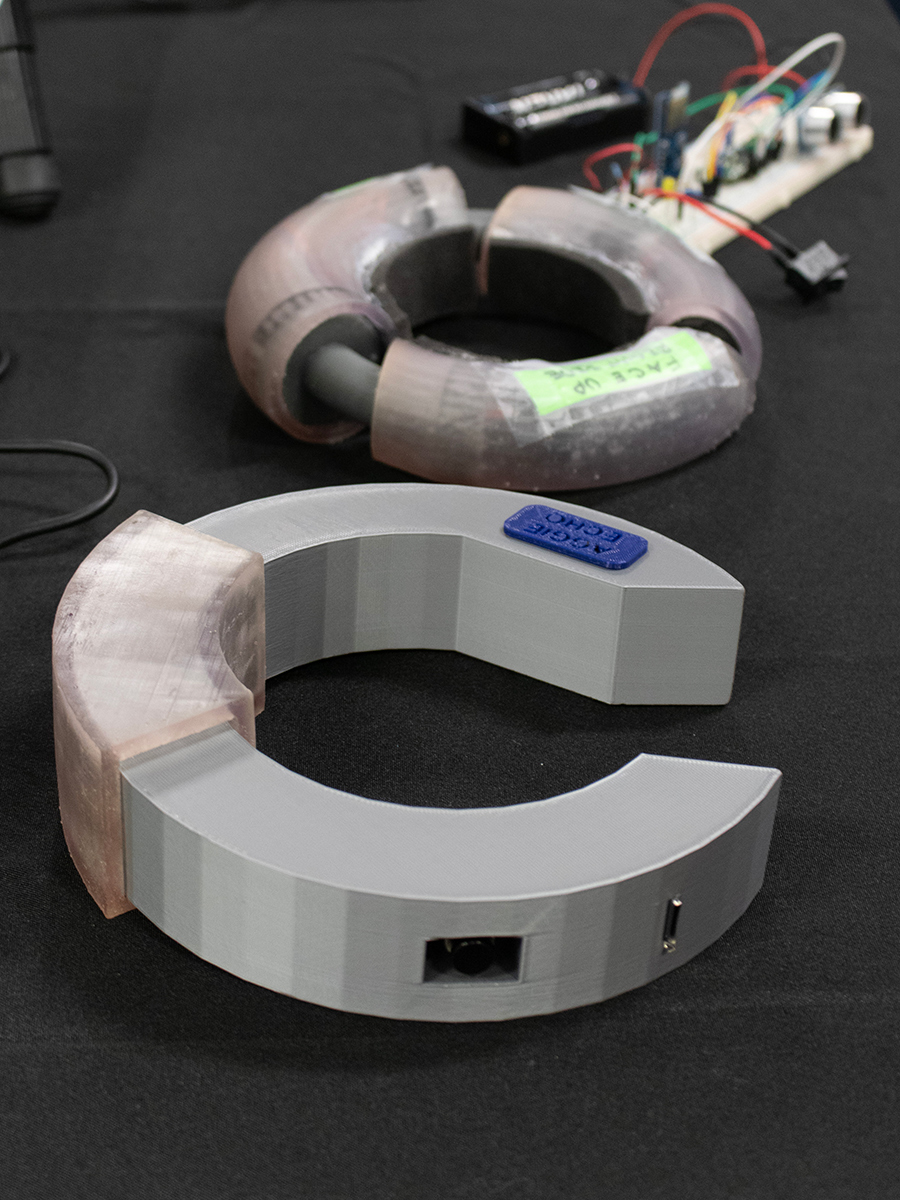
While changes in blood flow within a microgravity environment have been documented on the International Space Station (ISS), blood flow data on the moon’s surface has yet to be collected. “Aggie Echo,” a capstone team of six seniors from the Department of Biomedical Engineering, is being sponsored by NASA to create a wearable ultrasound collar that allows astronauts to document blood flow while on the lunar surface.
Due to the advanced training required to collect high-quality ultrasound images and the bulky nature of current ultrasound technology, the team’s goal was to create a solution that was easy to use.
“We're not sure how blood flow changes when in the moon’s microgravity environment,” team member Rachel Zakarevicz said. “Making this collar where the astronauts don't have to interact with it, but it's still taking readings, can give us a view into how our cardiovascular system responds.”
Making this collar where the astronauts don't have to interact with it, but it's still taking readings, can give us a view into how our cardiovascular system responds.
Team members said their design includes elements that optimize usability. Putting on the collar and beginning to record data is a five-step process that ensures correct placement. The team also included a grid of ultrasound transducers — the component that emits and receives soundwaves that bounce off body tissues.
“To make it failproof, our design includes an array of transducers,” team member Cheslee Karasek said. “If the collar is on somebody and they're moving left and right, it will be able to identify if it's on the right spot and take readings from that specific transducer.”
While research has reported the development of wireless ultrasound patches, the team concluded a collar would be most user-friendly and effective at providing a holistic view of how the cardiovascular system performs.
“Our sponsor recommended focusing on the jugular vein in your neck, as it’s taking all the blood from your head into your right atrium,” Zakarevicz said. “On the ISS, there's no gravity pushing your blood down, so your blood shifts up. Flow in the jugular vein is a good indicator of what is coming from the brain and what’s happening right before blood gets into the heart.”

In November 2023, Aggie Echo placed second overall in the Texas Space Grant Consortium Design Competition for their poster breaking down their idea and design elements. The team also scored first in poster presentations, tied for second in design models, third in oral presentations and fourth in peer evaluation.
“The win is a testament to us as a team because we all put a lot of effort and passion into this project and I think it shows,” Zakarevicz said.
The team said they will continue optimizing each element and creating a strong proof of concept for their ultrasound collar so NASA can begin building the product. The team traveled to Houston to present their prototype to NASA’s biomedical engineers.
Aggie Echo partly credits Dr. Jeff Reynolds, their biomedical engineering design instructor, for success with the product and for helping narrow their ideas into something tangible.
“He came to our competition with us, which was big,” Karasek said. “He supported us there and advocated for us, and then he's just good at giving advice. He's helped me with the electronics by guiding me and helping me figure it out.”